2020 was an interesting year; definitely different. Because we were all wearing training wheels on this pandemic adventure, many of the initial trips that I organized for the Lake George Gem and Mineral Club had to be cancelled and planned again and we had a shortage of volunteers as you could imagine. Although the year was an unprecedented scheduling challenge, I was able to schedule about 15ish trips for the club this season; which actually felt about right. I did several prospecting trips by myself and with others this year as well. Here are some of the highlights from my 2020 rockhounding adventures!
Goethite – Jefferson County Colorado
Goethite is one of my favorite things to dig; but I don’t find it very often. I found several pieces this year in a couple of locations in Jefferson County. Can’t wait to check out more of that area!
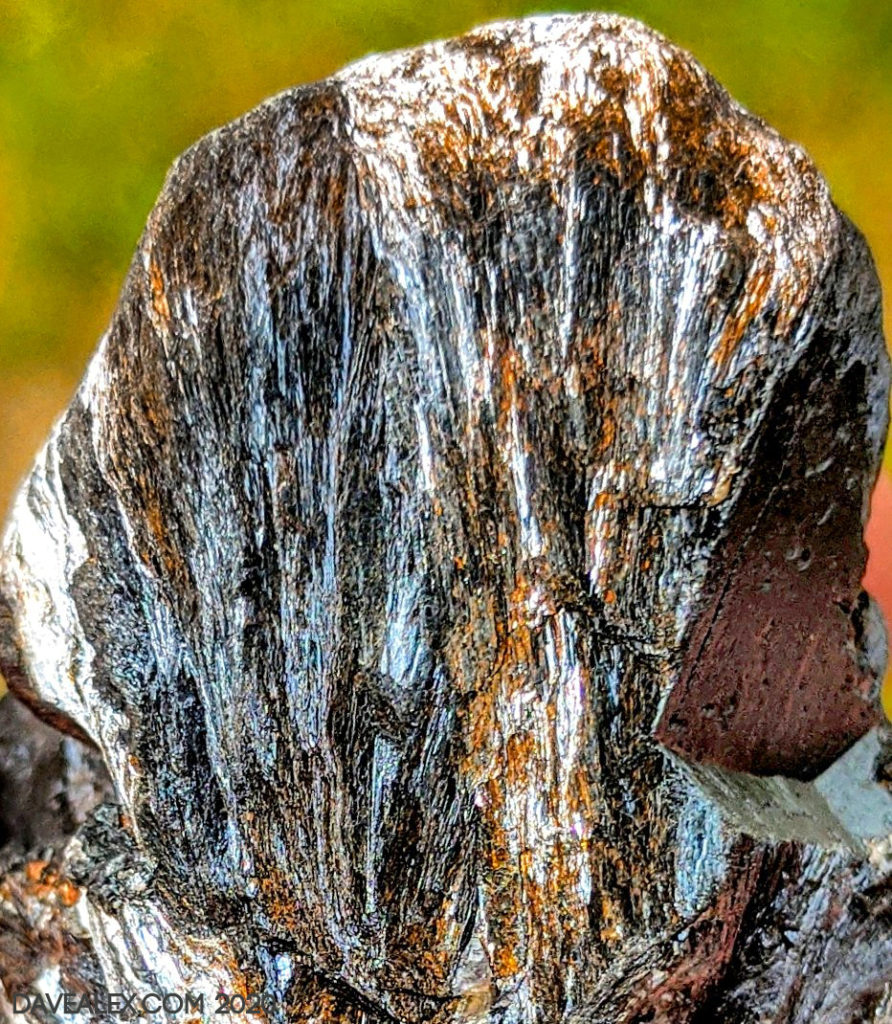
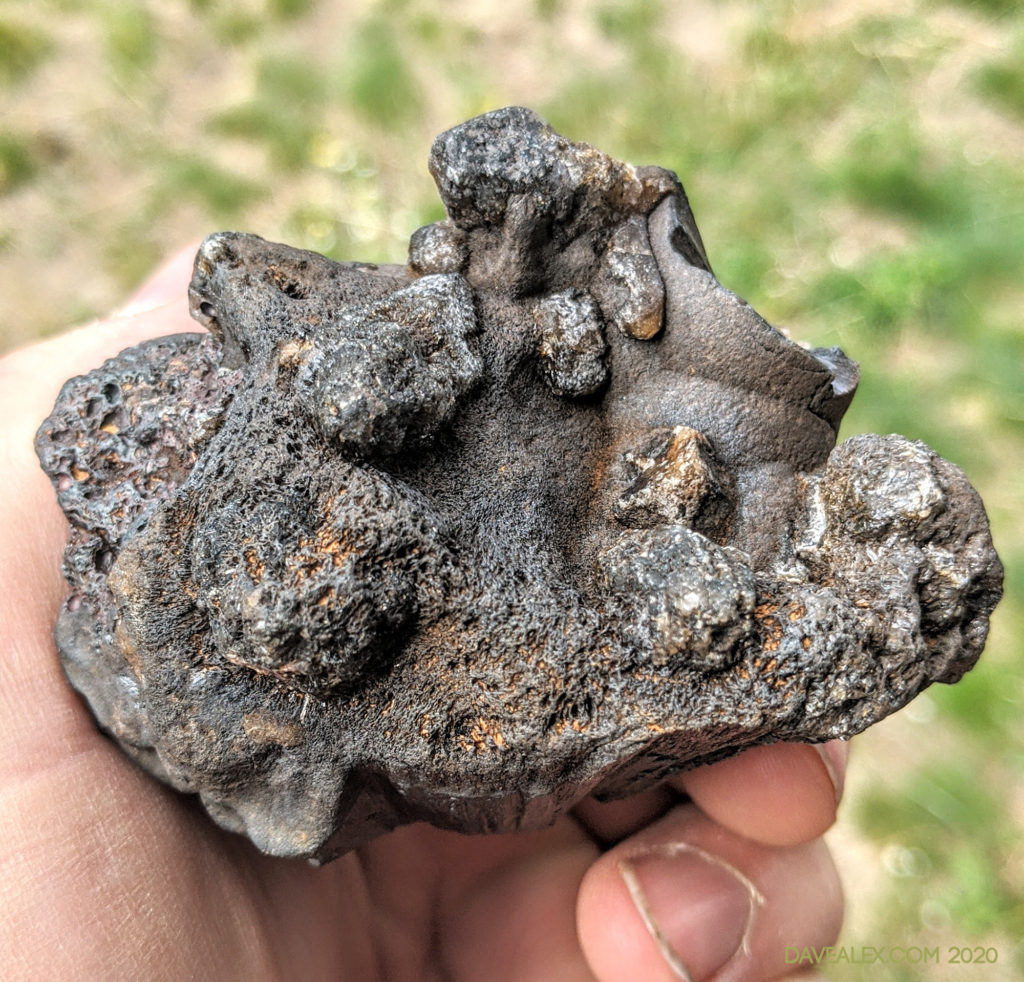
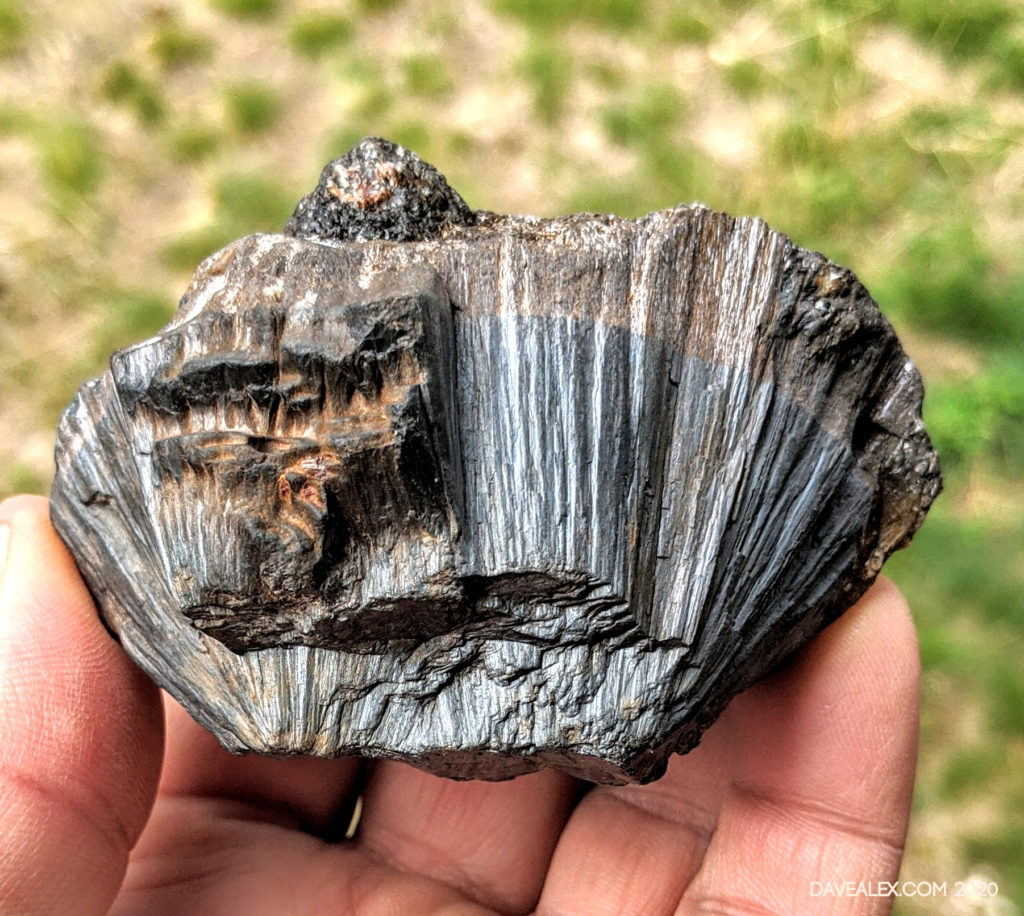
Topaz Mountain Gem Mine Colorado
Always a lot of fun, this is the trip to the Dorris Family Topaz Mountain Gem Mine along the Tarryalls in Park County Colorado. This is an alluvial basin where topaz has eroded from the mountains and deposited in ancient streambeds. The Dorris Family uses the excavator to move the alluvial river-bottom gravel into piles. Rock clubs and public are allowed to pay and rake through the tailings piles, allowing the visitor to purchase the topaz at often wholesale or lower prices if finding a cutter or high-end specimen.
Normally mining operations goes through the piles of gravel with a shaker containing multiple levels of classification (i.e. screen sizes). The gravel that falls all the way through the shaker is bagged which become the basis of the bag of gravel that must be purchased as part of the fee for digging. That bag always has topaz (it is salted on top of the random whonker that may have sifted through the shaker).
This year our bag had a couple of cutters which was really cool! My dad and I found a couple of topaz raking the pile, but our pile didn’t seem to have as much pay dirt as others. There were many really beautiful topaz found in all areas of the mine!
On top of everything else, it was a beautiful day! Folks stayed “socially distanced” as we were just starting life within a pandemic and everyone had a wonderful time at the mine!



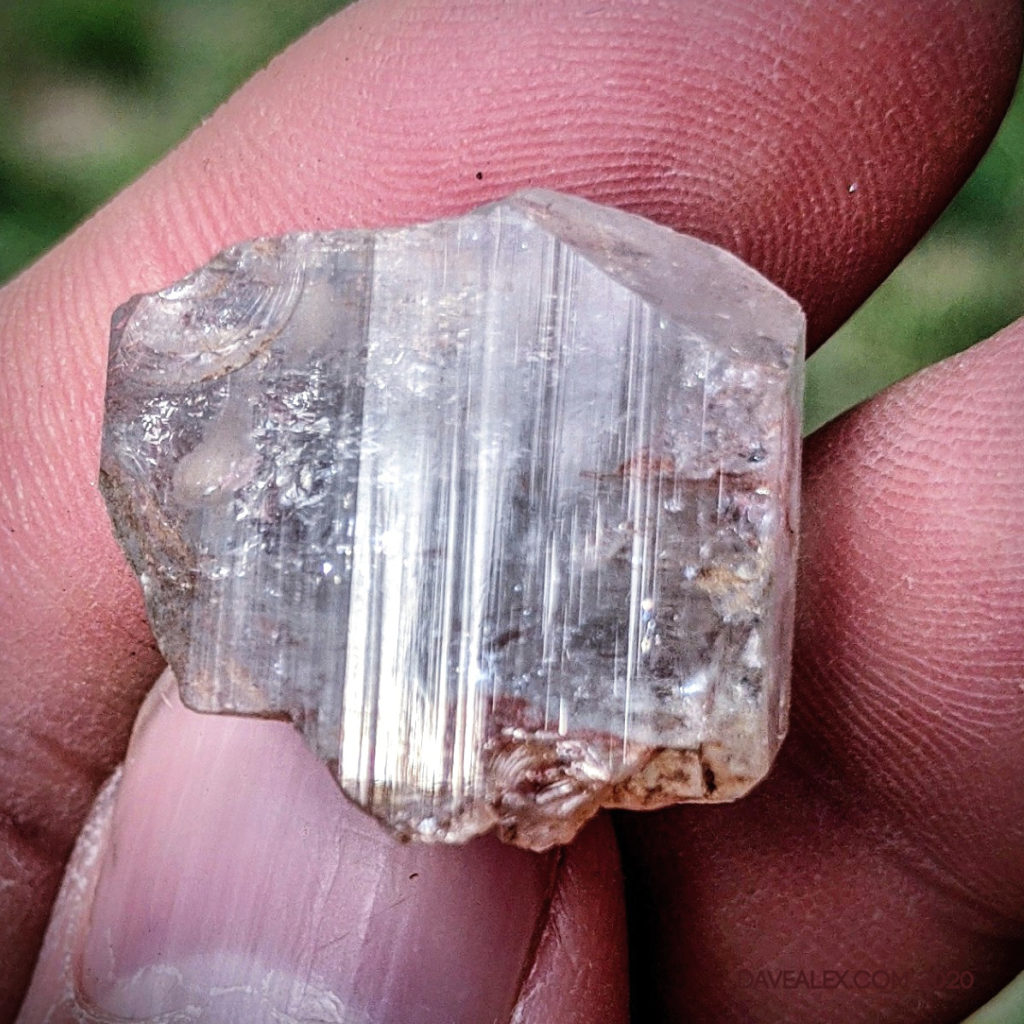
Topaz @ Taylor Range Mines, Utah
Several of us visited a group of claims as a scouting trip for potential club trips. This was actually supposed to be a three-club trip this year, but due to Covid the mine owners didn’t want that many people together to be safe. So we went with a smaller group. The pay-to-dig mines are operated by Gem Tours (https://gem.tours/). We went to four different mines and found many crystals at each mine. It was a very fun trip and I highly recommend this company. We hopefully will be planning our club trip in 2021 to this area. Today there cannot be new claims in the area to preserve the rockhounding opportunities. There are some grandfathered in claims, which this company owns several.
The nice topaz of this area is orangish red and fully faceted when you pull it from the vugs in the rhyolite. It is just beautiful. What I learned is that even if you are finding nice shaped crystals, if you can’t see the color then it is likely you are finding quartz included, or “sand” topaz. The sand topaz crystals are cool, but nowhere near as lustrous and stunning as the orange/red imperial topaz! You will find red beryl (bixbite), bixbyite, garnet and a few other minerals here too. The nearest hotel is about 30 miles away in Delta Utah, but given this is BLM land there is plenty of camping available especially if you have a high clearance 4wd.

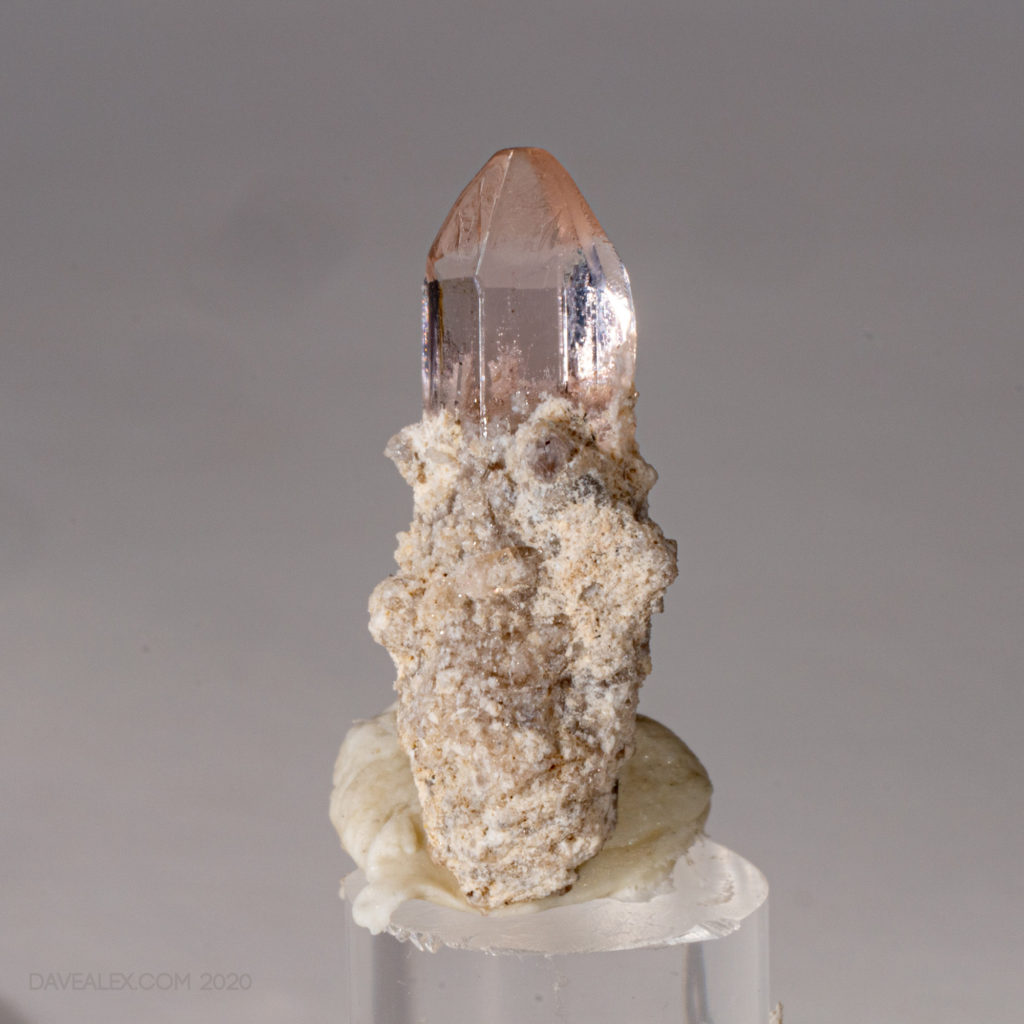


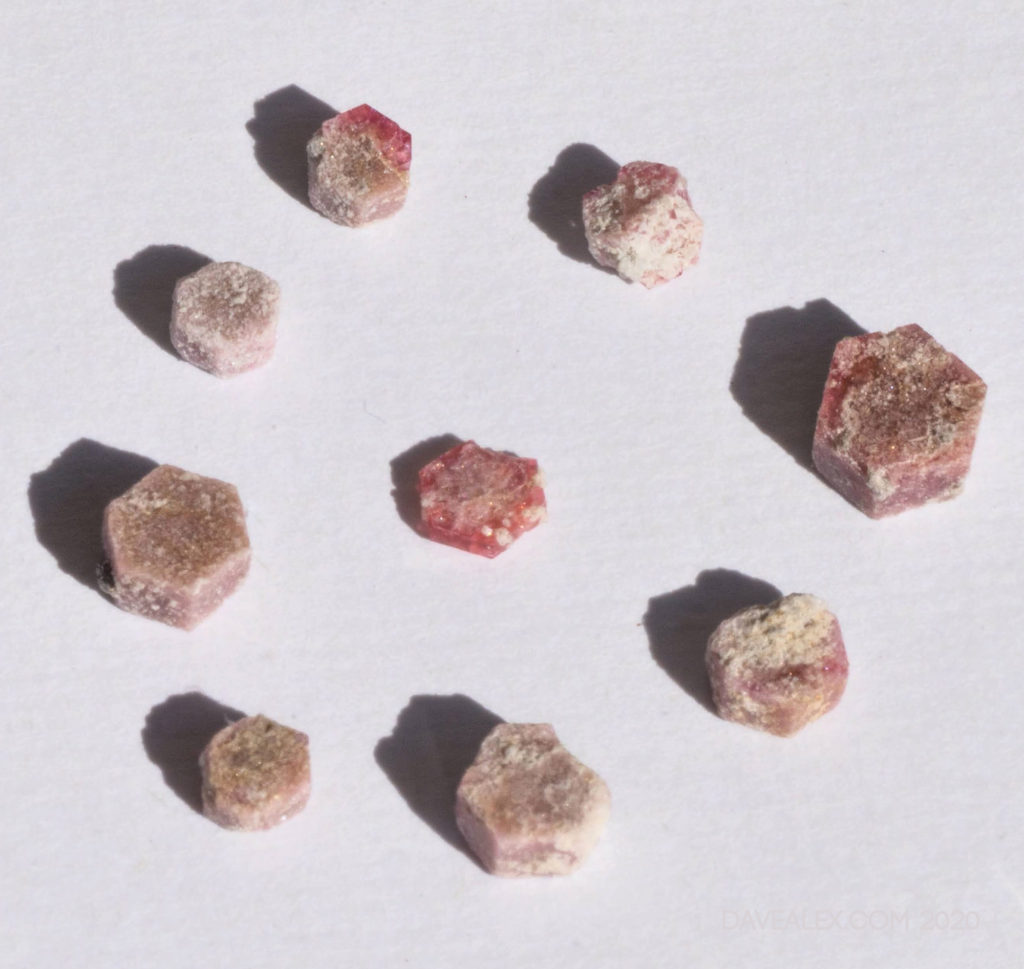
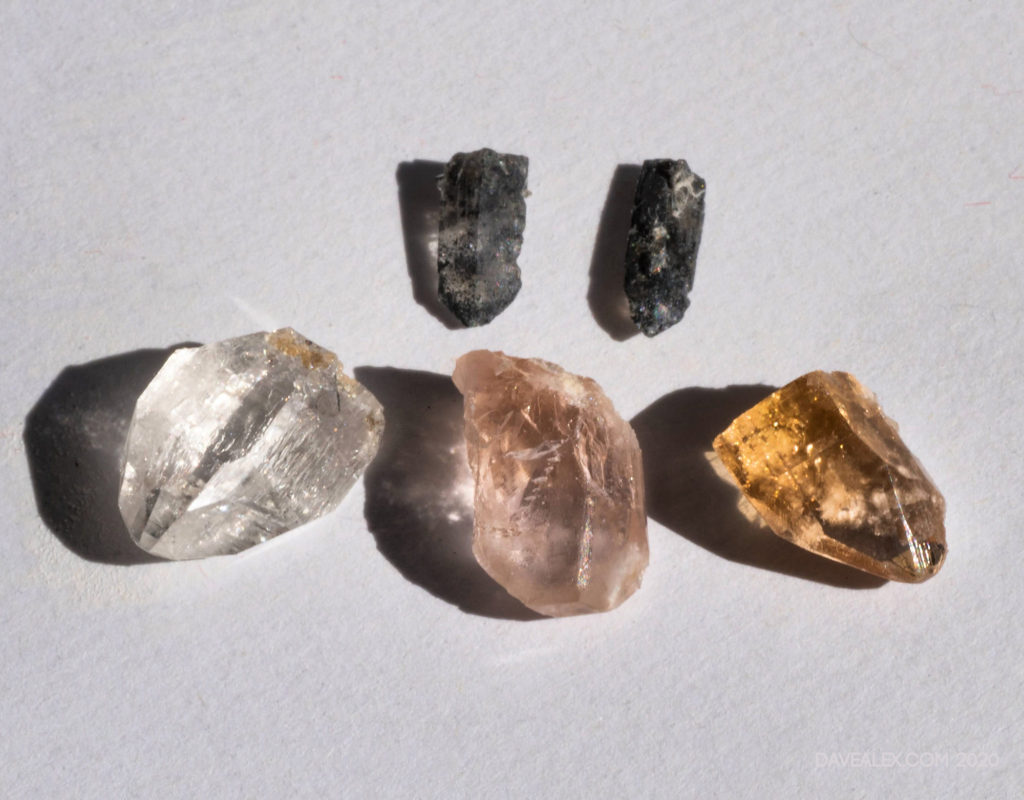
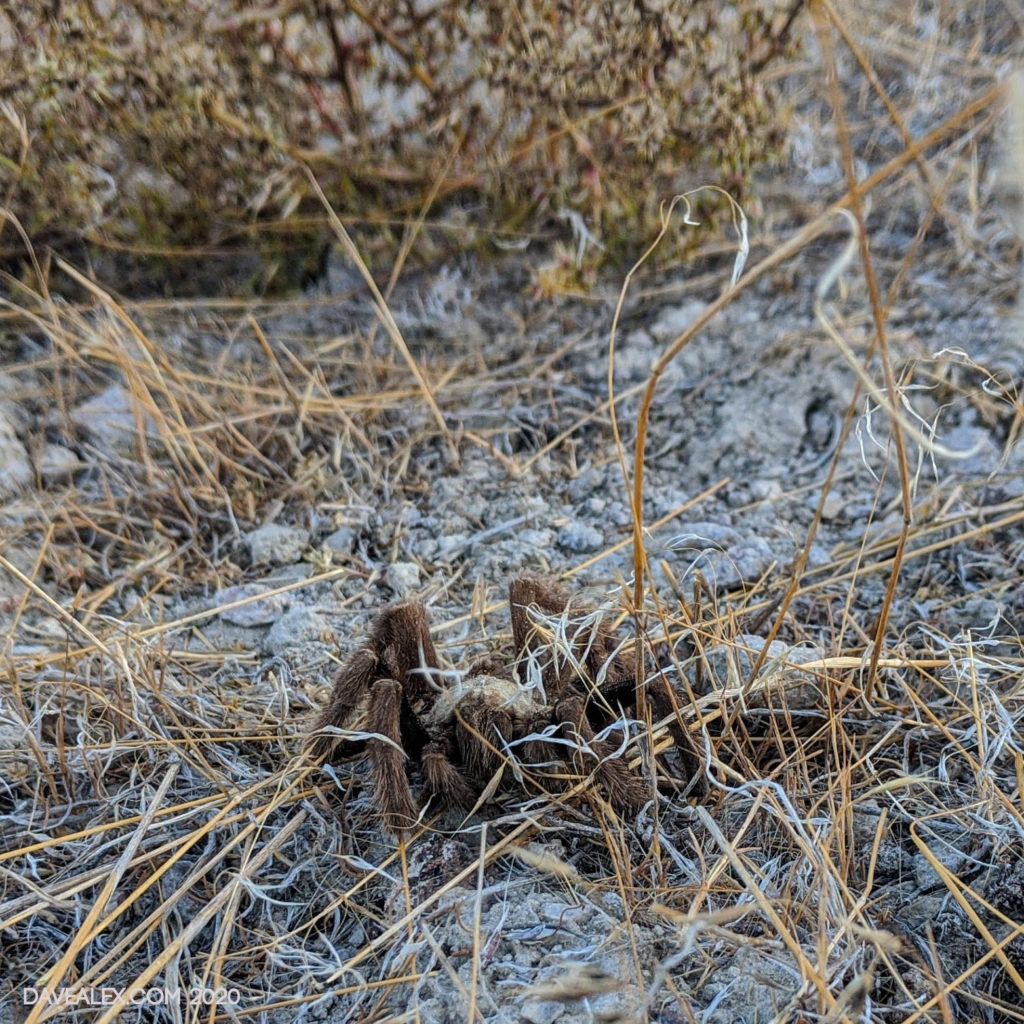
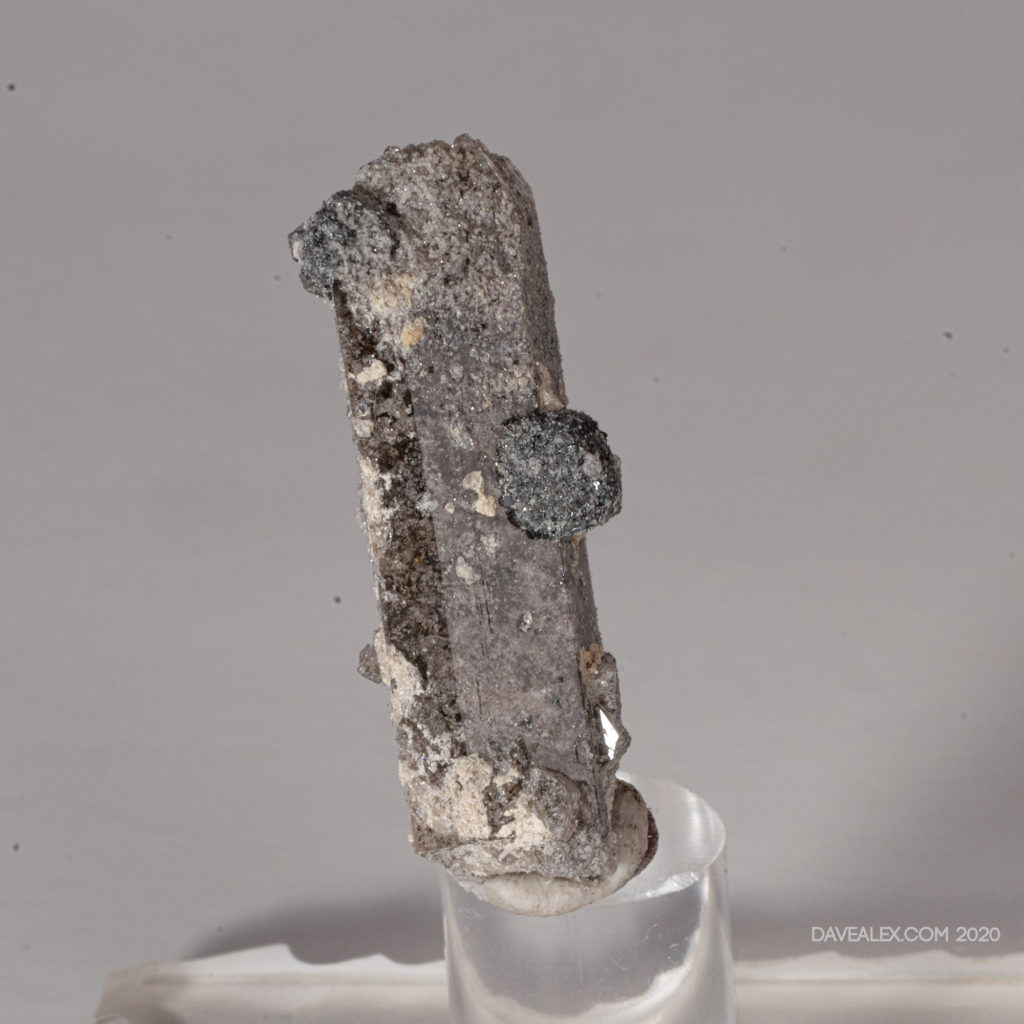
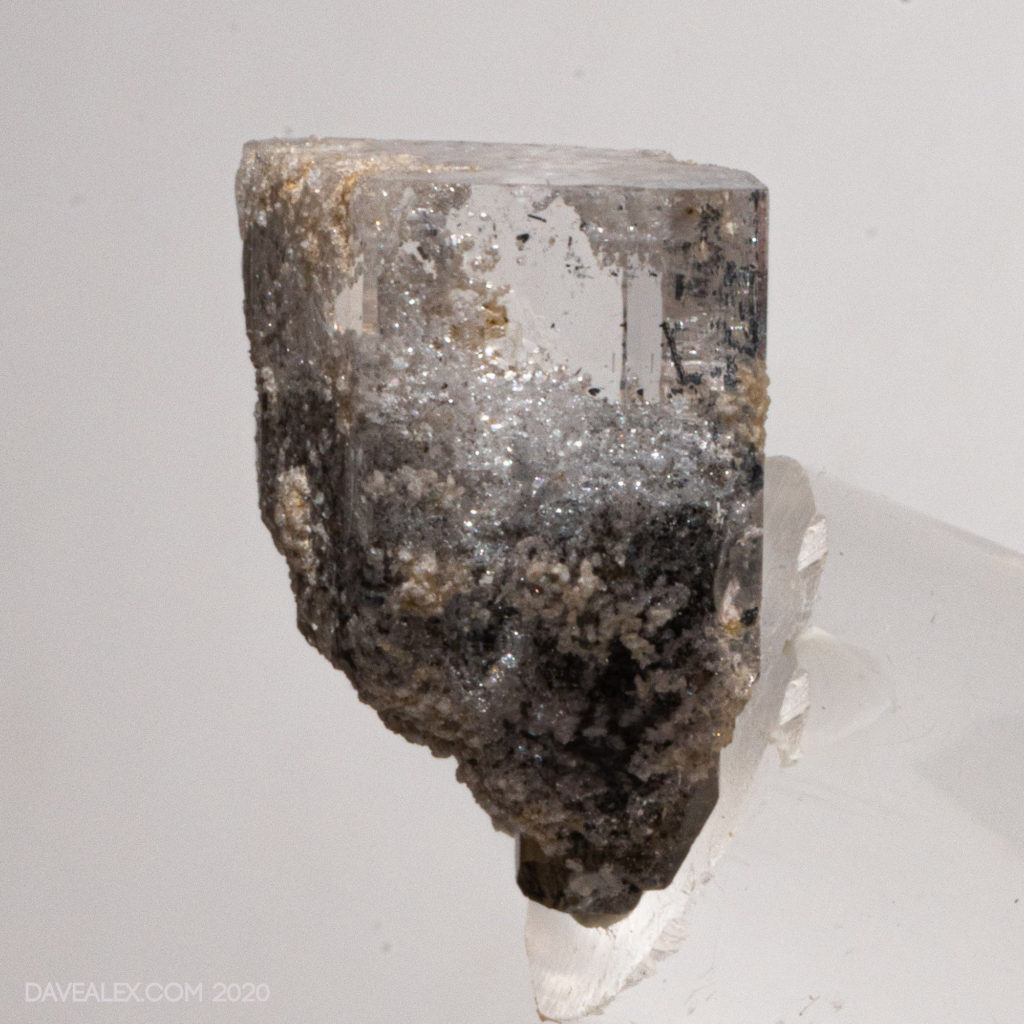


Garnets – Fremont County Colorado
I arrange our club to go to this location every year as it is a fun spot, easy for old and young, and just a couple hours away. The garnets can be found either alluvial or within the schist wall. They are all small, but many are gemmy. They stop being gemmy around 5-6 mm. They maybe get to 10mm, but that would be a rare size. You’ll find several and some are really pretty. We have made some cool rings and ornaments for the holidays using these.
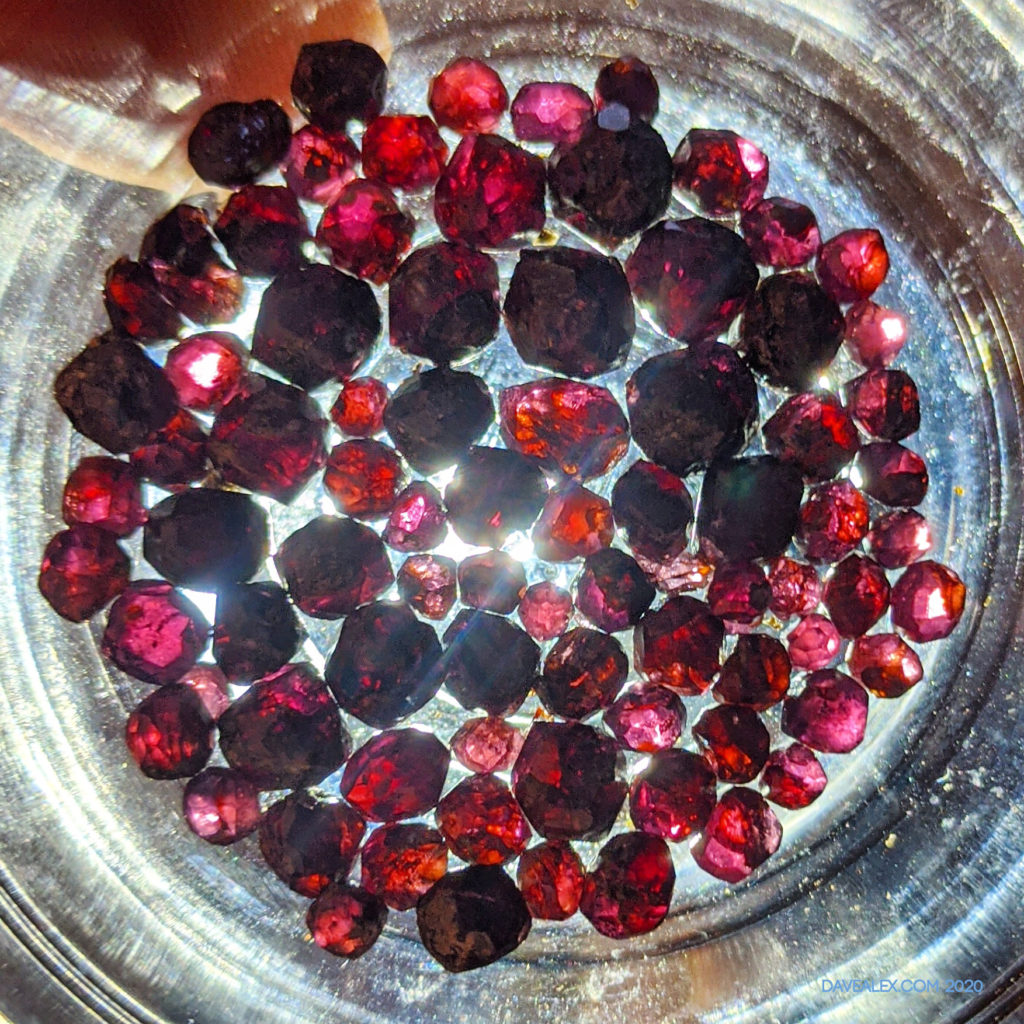
Green River Fossils – Douglas Pass Colorado
I have heard about this site in far Western Colorado and another near it in Utah. The area is Green River formation shale which contains fossils of leaves, insects and sometimes vertebrae fossils (which are illegal to collect). This site is optimal because of a satellite tower that is used for flight control of airplanes that was built here. In grading the pad for the site and cutting the road leading to it, lots of shale was moved and the tailings on the sides of the leveling and road work contain fossils. Once holes started appearing near the radio equipment I’m sure the government didn’t want further excavation around the expensive investment and thus have made the site no trespassing. There is a clearly posted gate on the roadway to the tower however there is still some collecting opportunity before the gate.
The main roadcut in the picture below shows the road leading to the dish which is just over the hill. There is some space to collect prior to the fence and it appears there could be other successes along the ridgeline that the main road follows.
We found that by just picking up pieces of shale and looking at the edges, if there is darker colors that could be the sign of fossils on that layer. Using a chisel and hammer you can crack open the shale along that layer and see if it is a leaf. We found some nice leafs looking thru the tailings! Be careful, the shale is sharp and loose–you could easily lose your footing–I did a couple times. Shale is slippery when wet.



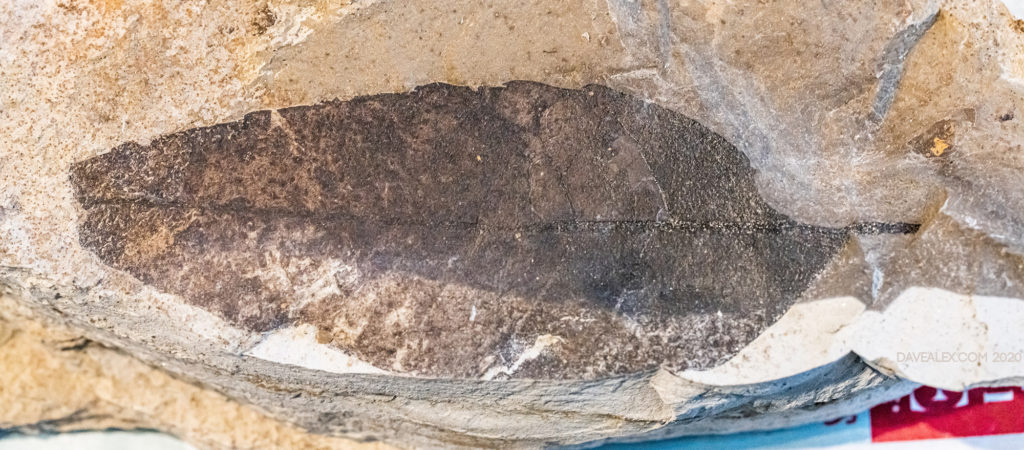
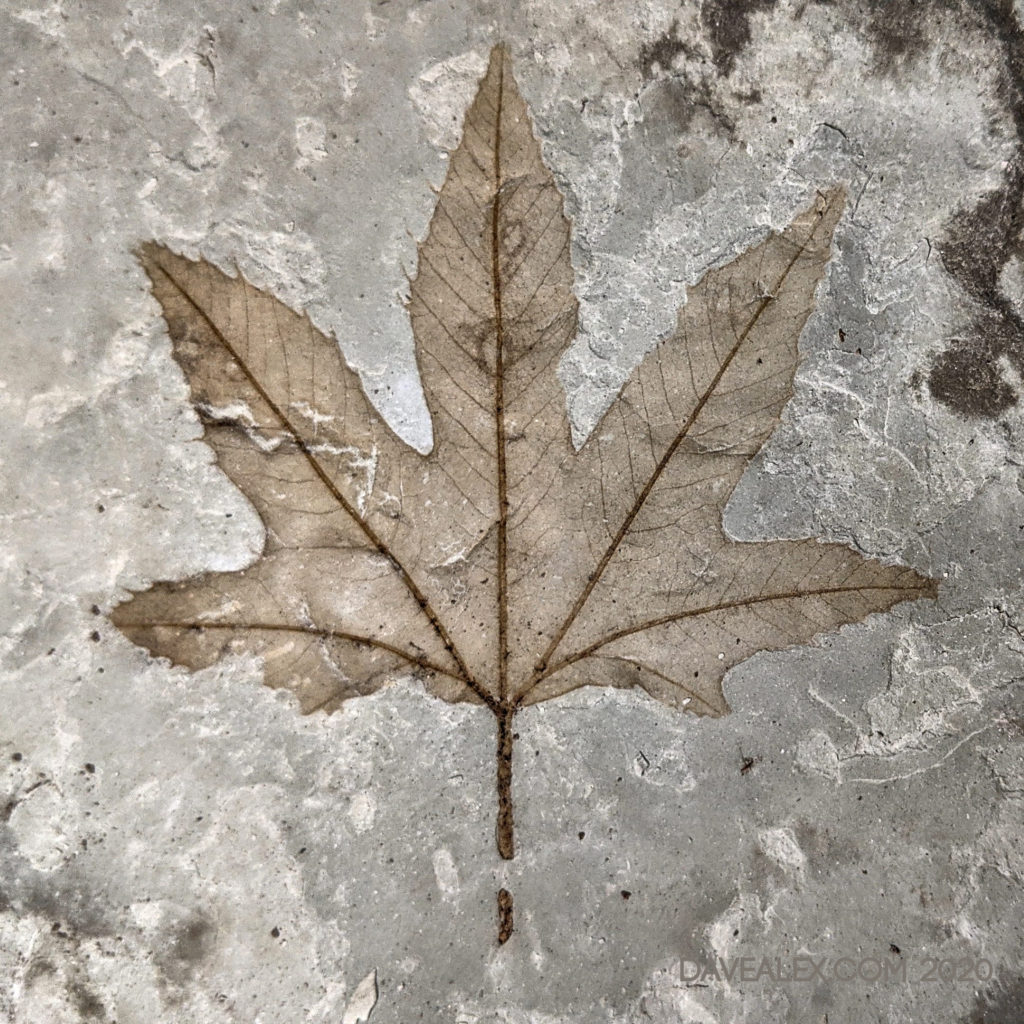
Lake Gosiute Blue Forest, Wyoming
This is a fun trip as the petrified wood from here looks like actual wood branches, its really neat! The easiest picking is in the washes coming off of the buttes; many are littered with petrified blue forest wood! You can also climb the buttes and dig for the wood at their source; here they are sometimes less broken up not having been directly exposed to weathering.
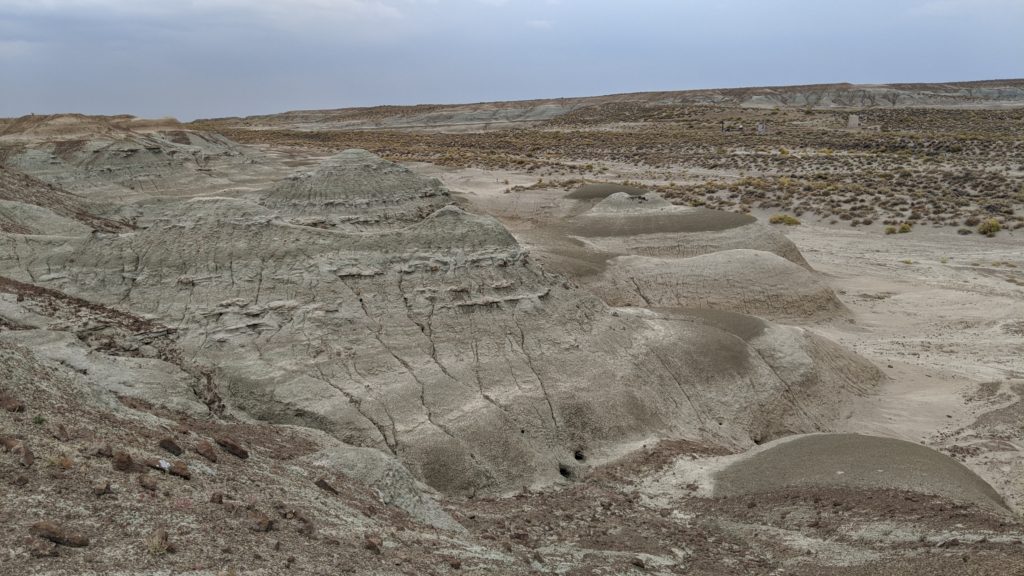
If your plan is digging for the petrified wood, I had luck looking for the outer coating rocks on the surface–these rocks sometimes surround the petrified wood in the shale (I’m wondering if it is fossilized algae or perhaps bark, still researching this). I also looked for actual petrified wood on the surface and figured out where it came from–mostly uphill and then dug there. Finally, I found by scouting previous digs that digging in the shale you sometimes find random signs within the shale (these coating-rocks and the wood are in a different, darker color than the shale), so just randomly digging could be productive too assuming you’re in a proven area.
The Blue Forest is in Sweetwater County Wyoming and is about a 30-mile diameter area of BLM oil fields. There are a ton of dirt roads of varying clearance levels so ensure you are using a GPS device so you don’t get turned around. Some of the roads could become impassable in rain.
We camped at the Slate Creek Campground and it was comfortable, has a couple restrooms, and due to the proximity to the Fontenelle Reservoir has many types of birds and wildlife. The Weeping Rock Campground is also near which was the backup plan. If there was no camping available in the BLM campgrounds; our final contingency plan was to just find a spot out in the oil fields since it is all BLM.
To find a collecting location, I have had luck driving around the roads and prospecting the buttes, washes and areas where there may have been excavation to put oil equipment. If you see piles of rocks and holes, then that is likely a good area as folks have dug in the area before. There are rules on collecting in this area especially on how much you can take and how you reclamate. Ensure you fully research before your trip.
There can be rattlesnakes and it is almost always hot, dry and windy. Ensure you stay hydrated and are aware of the sun.


Blue Barite – South Park Colorado
This is a publically available claim that I try to take the club to each year because everyone is sure to bring home some pretty blue crystals! The area was an ancient hot springs that was mined for the barite in the last century, you are searching for blue or brown barite crystals and clusters. This area is currently under claim by Dave and Lark Harvey whose hope is by claiming it they will ensure the public will always be able to dig there. There is a fee and you must sign a waiver, to do this stop by Bayou Salido Trading Post on the _very_ west side of Hartsel and they will give you tips and directions plus they have some great treats and gifts.
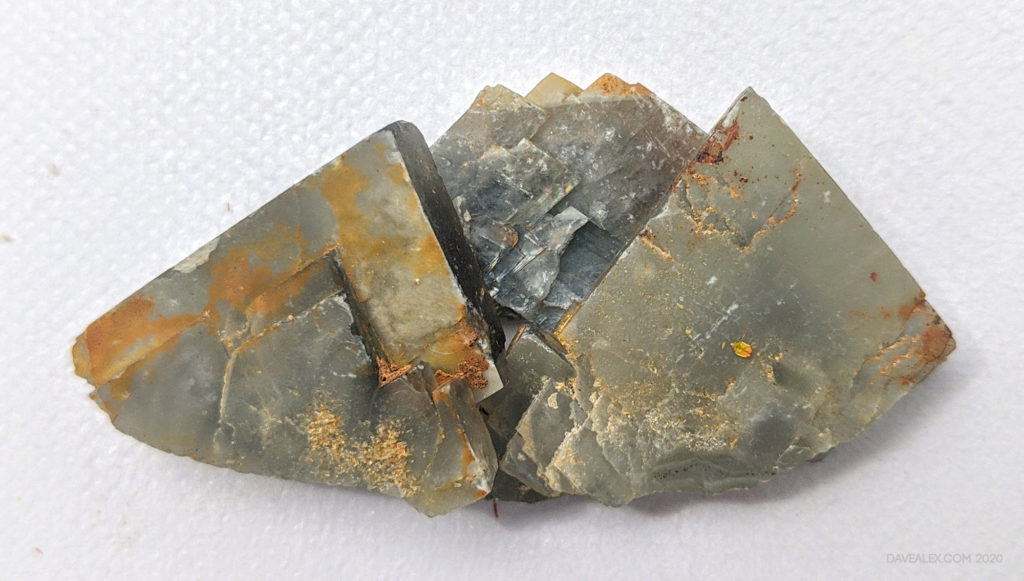
This is a great trip for kids or those with less patience when out rockhounding. The barite is literally laying all over the ground and in the tailings piles. After a rain or snow season washes off the discarded crystals there are certainly going to be some nice surface finds. Many folks wander around and find enough that way. But if you want to dig in search of the nicer clusters and crystals, there is a little effort involved. The crystals can be found by digging about 2-4 feet deep and then following the veins. Be careful digging as barite is fairly soft and brittle and it is easy to break a beautiful cluster or crystal in haste. The best clusters often look like innocuous rocks when you find them. I’d recommend to take a small bucket with water and a toothbrush and give a quick clean on some of the rocks until you can easily recognize them. I can’t imagine how many wonderful clusters I left laying in the pits!
Smoky Quartz, Pikes Peak Batholith
This year I did a lot of exploring in areas I’ve never been in, and when prospecting this way it’s expected to have varied results. I did find several pockets and a few areas I want to revisit. One pocket had a lot of funky floater growth clusters, another was really weathered, one was just fragments of quartz crystals, one with a ton of big mica but nothing else, one was just large mostly euhedral microcline crystals. A nice variety for sure, every trip can’t be producing the basis for retirement, LOL!

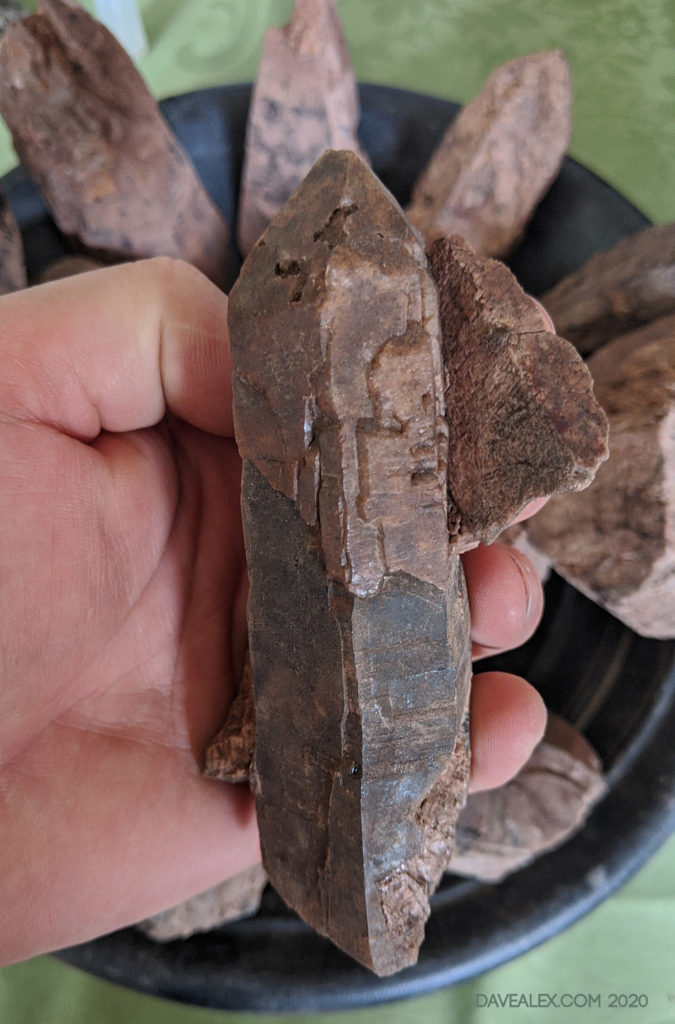
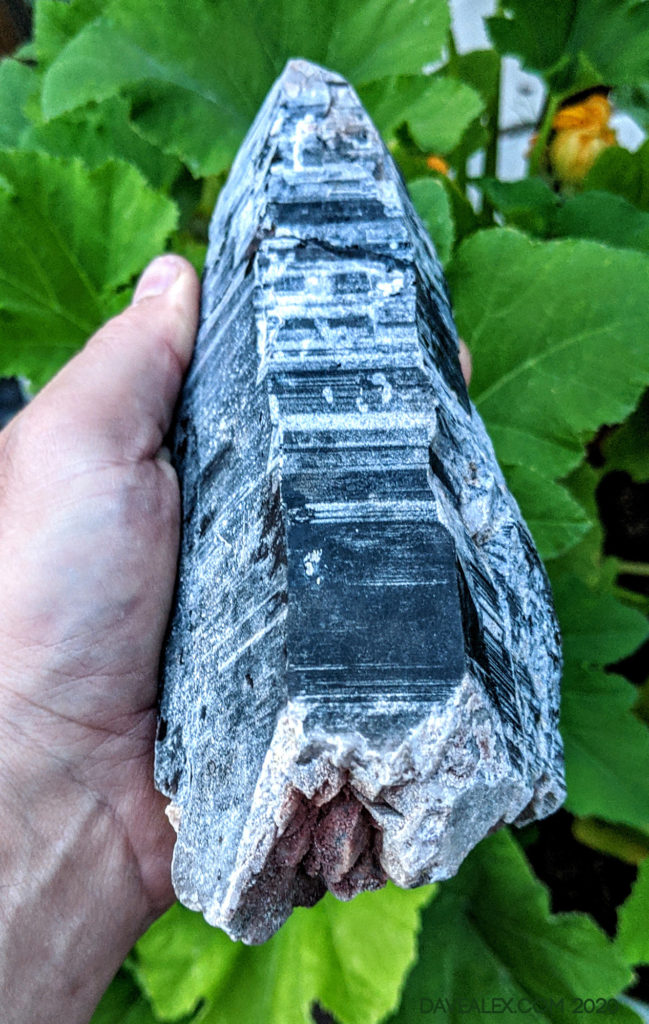
Mesa County Barite and Calcite – Book Cliffs Colorado
This year I organized a fall club trip to Book Cliffs in the BLM land north of Grand Junction. This was a joint trip with the Mile High RAMS club as I have never been to this popular Western Slope locality and that club goes nearly every year. Between the two clubs, we had a good turnout on the first day however it was just the leaders on the second day–not going to argue with that! You’re digging in large concretions from Mancos Shale. In between layers of the concentric-ish concretion there are calcite and barite seams which is the focus.
You are in rattlesnake and scorpion habitat, so take appropriate PREcautions.
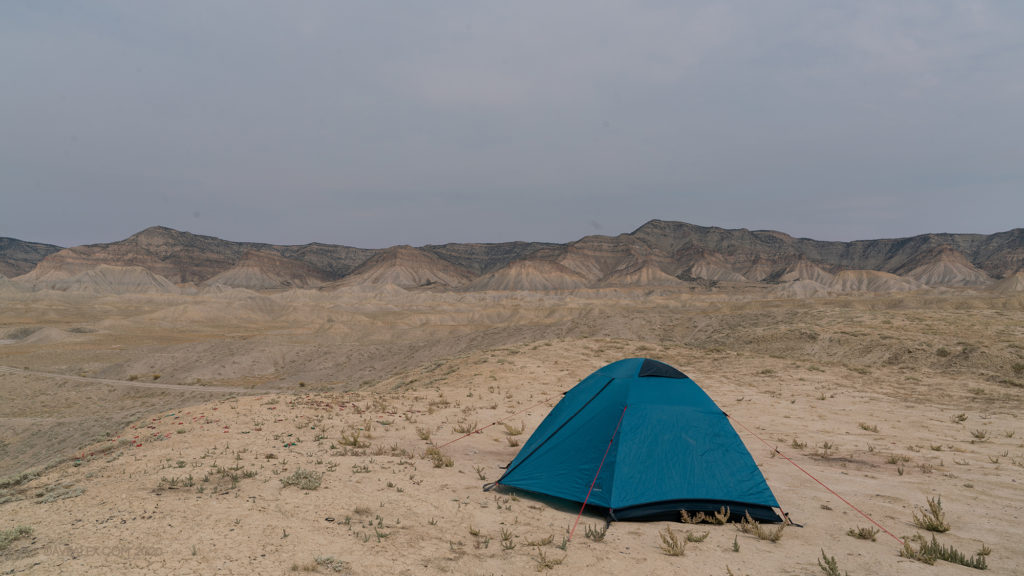
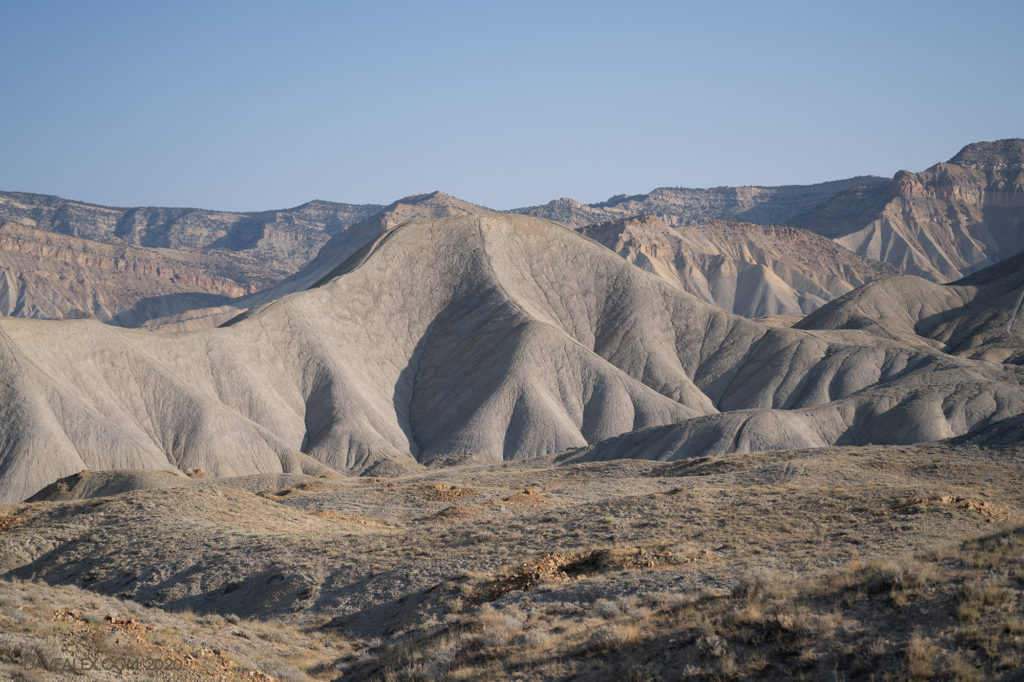
A couple of prospecting tips.
These concretions have eroded out of the Mancos shale and through normal weathering cycles have broken down and eroded open. Check downhill of your concretion and work your way up looking for __flat sides__ and clear/brown barite chunks. You’ll see white/yellow calcite typically as an indicator. The richer reddish color of the host concretion, especially when sparkly, is where I found that the rock was attached to calcite or barite–you’ll know the difference between this deeper, richer red rather than normal concretion red once you are acclimated–look through tailings to get an example. You’ll want to focus digging in the richer, redder areas–although you can find cool barite anywhere in the concretion.
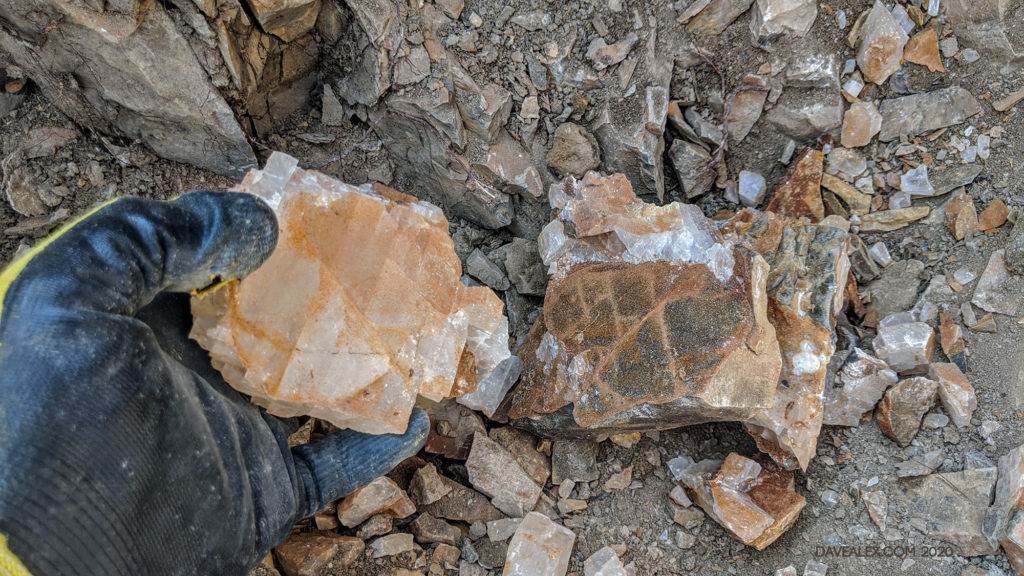
Many people finish for the day and head out (likely because they are dead tired, this kind of digging in the heat is a fair amount of work!); but they may have been opening up the goodness and didn’t finish it off; or didn’t know it was there so make sure and prospect others digs. The rain and snow may have cleaned off some rocks that were not noticed which may lead you to a nice and easy pocket. I witnessed a really nice pocket from the edge of a prior dig with little effort to extract some beautiful crystals.
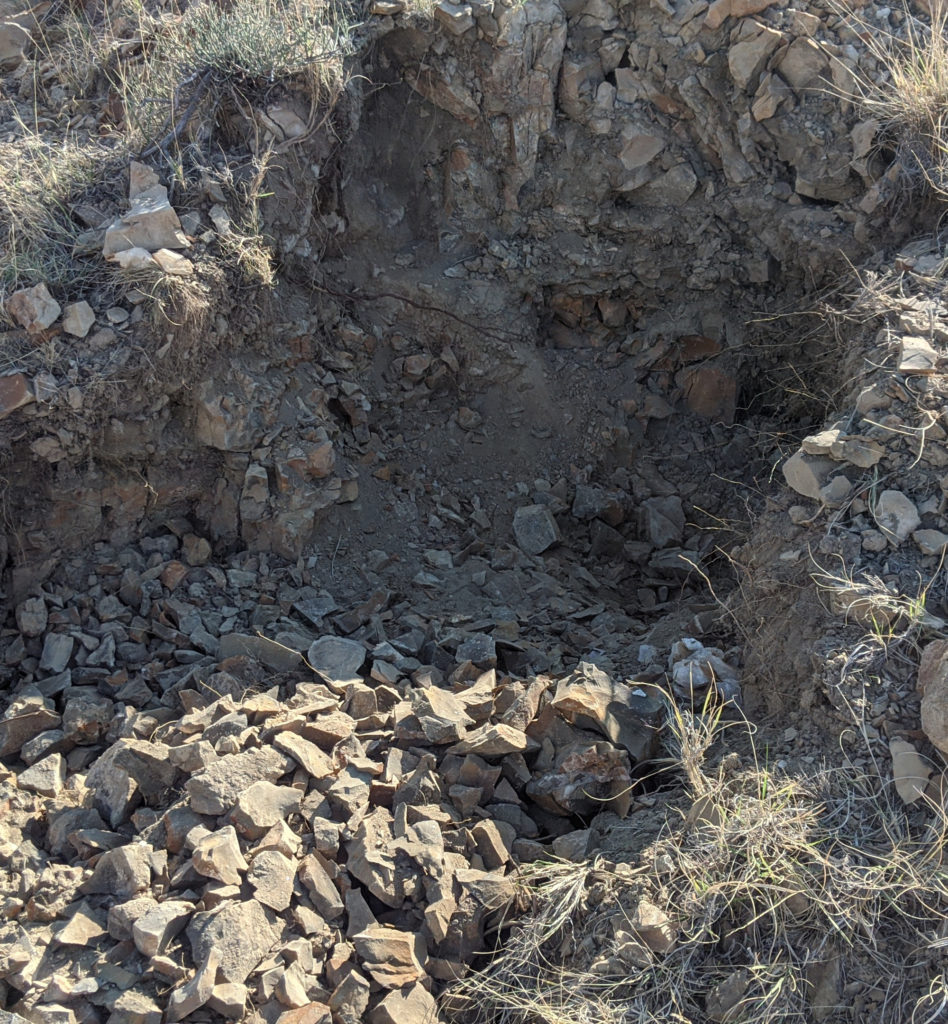
When approaching a concretion that you want to explore, ensure you make a bunch of noise and look out for snakes. Typically you’ll see them or they will let you know when you are not wanted. Darwinian theory comes into play here; seems obvious but you’ll be tempted to stick your hand in a gap where snakes could be chilling! Also, wear a good pair of gloves, a little thicker than normal if you can. This with long sleeves will ensure the surprised scorpion that comes out with your rock doesn’t cause issues–I saw many scorpions this trip, a couple on hand. It’s usually hot, dry and windy, so consume lots of water and be aware of the sun.
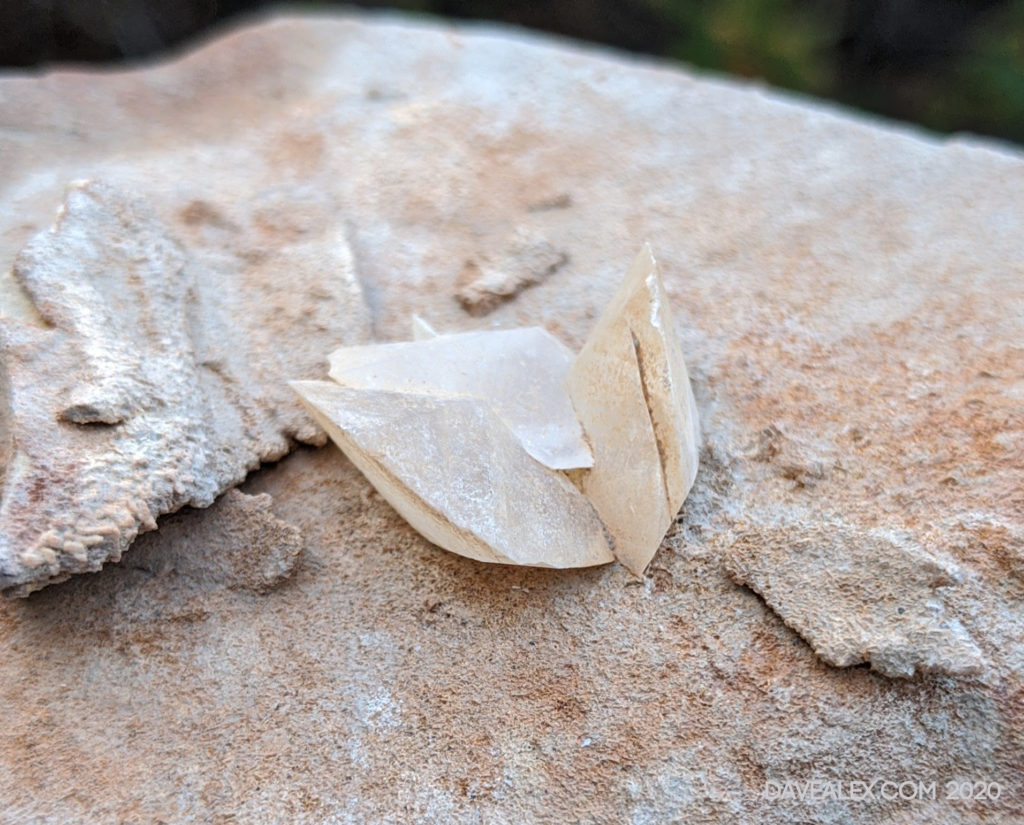
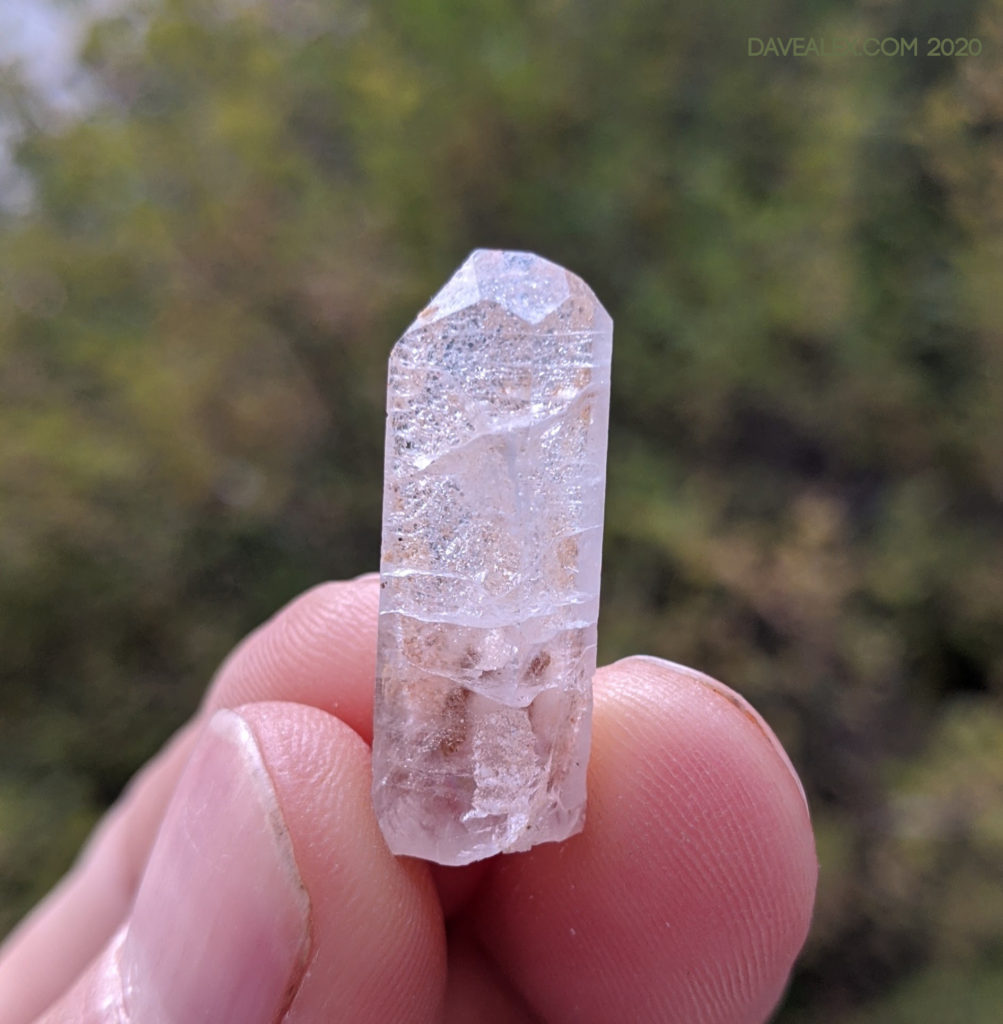

El Paso County

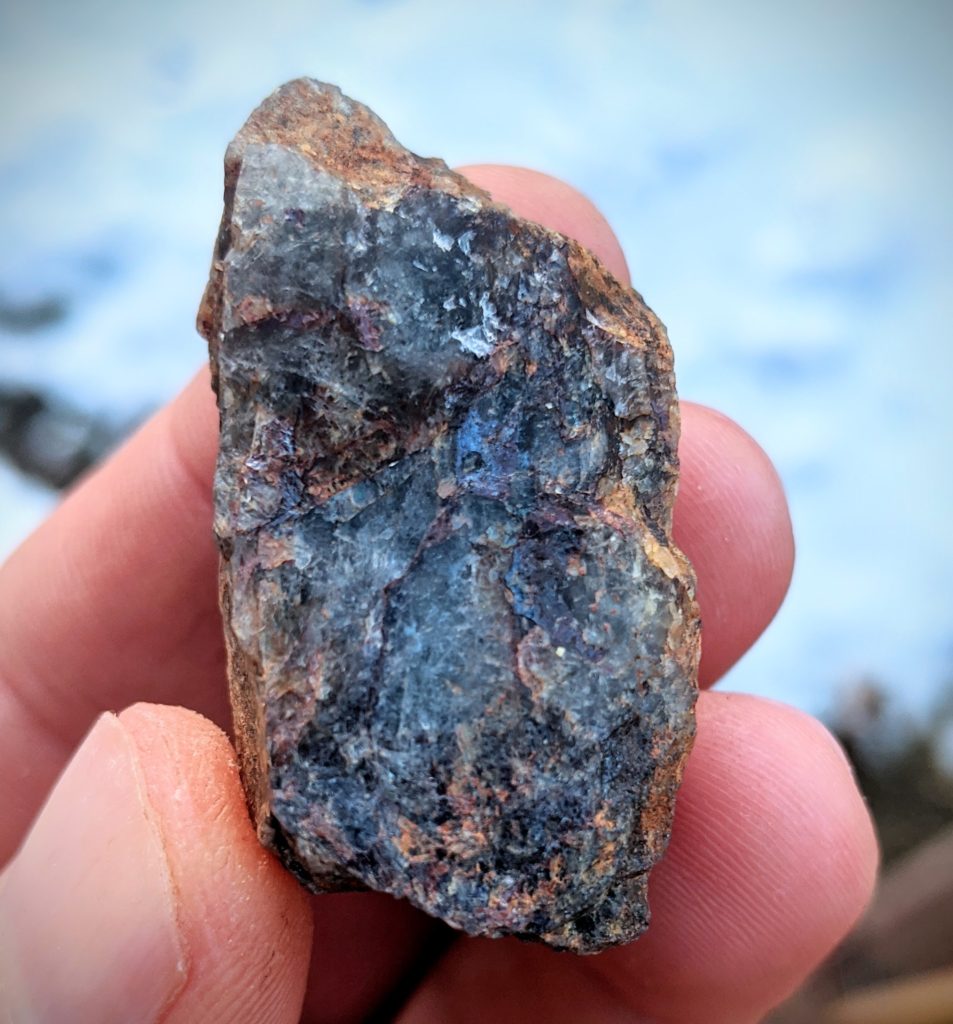
Looking ahead…
I have another crystal pocket video almost ready (probably posted in early 2021) for the ObliqRecordings YouTube channel. My band Multicast is doing a proper soundtrack for it now; that should be finished recording and edited this week and then final video production can commence!
I do listen to feedback so the soundtrack will be more “crystal video like” (whatever that is, lol), can’t wait to see the feedback this time! Many folks didn’t like some of the music our bands created on the videos. 95+% of the comments were gripes about the music–I appreciate the feedback for sure–but an interesting statement on how society communicates. Based on my experience and observation, many folks feel compelled to complain about what they didn’t like but not praise what they did like, why is that? I see how many hours are watched on my YouTube channel, so I know folks invest significant time watching. Wouldn’t it be a happier universe if folks took the few seconds to provide positive feedback on how they felt or what they liked about things too? That would certainly be more engaging to the creator, something I’ve been thinking about and will concentrate on in my foray into digital media for 2021! 🙂
Finally, I went to several other sites but ended up either not digging (helping others in the club) or not finding anything worth keeping. Would love to hear of your adventures and spots you explored in the last year!
Hi! I just started this year to learn about crystals and minerals, and how to find them- and most of the earth is still frozen here 🙂
I’ve always loved collecting rocks, but I had no idea that I could look for specific types, especially not here. Beautiful crystals seemed like something from faraway mines.
I did find a few things, some just pretty but not special (One of my favourite finds is bergslagssten), some crystals, and some minerals. But I’m still struggling to identify them 🙂
Posting to social media groups like rockhound pages on Facebook or being in a club offers identification opportunities. That’s how I identify most of my unknown rocks.